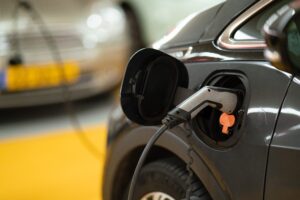What You Need to Know to Equip Your Home For Your Electric Vehicle
 In recent years, the sale of electric vehicles (EVs) has increased exponentially, with more and more drivers making the switch to clean and sustainable transportation. Over 2.3 million electric cars were sold in the first quarter of 2023, with this number expected to rise to 14 million by the end of the year.
In recent years, the sale of electric vehicles (EVs) has increased exponentially, with more and more drivers making the switch to clean and sustainable transportation. Over 2.3 million electric cars were sold in the first quarter of 2023, with this number expected to rise to 14 million by the end of the year.
If you’re among those who have embraced the electric revolution, it’s essential to ensure that your home has the necessary equipment to support your vehicle efficiently. From charging infrastructure to energy management, here’s what you need to know to make your home EV-ready.
Understand Your Charging Options
There are different levels of electric vehicle chargers, categorized as Level 1, Level 2 and DC Fast Charging. Level 1 chargers use a standard household outlet (120 volts) and are typically the slowest charging option. These chargers take around 40-50 hours to charge your car from empty to 80% full.
Level 2 chargers (240 volts) are faster and more suitable for home installations, providing a great charging speed boost. Level 2 chargers can charge your battery in as little as 4-10 hours. DC Fast Charging, available at public charging stations, is the quickest option but isn’t practical for home use due to its high installation cost.
Evaluate Your Space
Ensure your parking space is convenient and spacious enough for EV charging. Make sure there’s enough space for the charging cable, and consider installing the charging station close to your parking spot for easy access.
Install a Level 2 Home Charger
For most EV owners, a Level 2 home charging station is the preferred choice. These chargers offer faster charging times compared to Level 1 chargers, making them more practical for daily use. Ensure your home electrical system can support the increased load and consider hiring a licensed electrician to install the charging station professionally. Popular brands like Tesla, ChargePoint and JuiceBox offer reliable home charging solutions.
Check Electrical Capacity
Before installing a Level 2 charger, assess your home’s electrical capacity. Ensure your electrical panel can handle the additional load without causing issues such as tripped breakers or overloaded circuits. It may be necessary to upgrade your home’s electrical panel, depending on your home’s age and existing infrastructure.
Look Into Time of Use Rates and Energy Management
Many utility companies offer time-of-use (TOU) rates, in which electricity costs vary based on the time of day. Consider taking advantage of lower rates during off-peak hours to charge your EV, saving you on costs. Additionally, explore smart home energy management solutions that allow you to schedule charging during periods of lower electricity demand, further reducing costs.
Explore Renewable Energy Options
Enhance the sustainability of your EV charging station by incorporating renewable energy sources into your home. Solar panels are a popular choice, allowing you to generate clean energy to power your home and vehicle. Renewable energy reduces your carbon emissions and provides long-term cost savings as you rely more on your own energy production.
Browse Mobile Apps and Connectivity
Many EV manufacturers and charging station providers offer mobile apps that allow you to monitor and control your charging sessions remotely. Explore these apps to schedule charging, track energy usage, find the nearest charging station, avoid running out of battery and receive notifications about your car’s charging status. The following apps may be helpful:
- Google Maps
- PlugShare
- EVgo
- ChargePoint
- RingGo Parking
- Zap-Map
- Just Park
- The AA
Invest In a Portable Charger
Consider having a portable Level 1 charger as a backup. Portable chargers can be useful when traveling or when you don’t have access to your home charging station. They allow you to charge your car on the go and they’re small enough to fit in the trunk. Keep one in your vehicle for emergencies or unexpected charging needs.
Implement Safety Measures
Ensure the electrician adheres to the necessary local codes and standards when installing your charging station. Regularly inspect and maintain all components, using UL-certified equipment and incorporating ground-fault circuit interrupters (GFCI) to prevent electrical shocks. Implement proper cable management and weatherproofing for outdoor stations and install emergency shut-off switches.
Keep a fire extinguisher nearby and follow manufacturer recommendations for usage and maintenance. Educate household members on safety protocols, especially children, to prevent any accidents.
Investigate Home Energy Storage
Consider integrating home energy storage solutions, like batteries, into your EV charging setup. Energy storage allows you to store excess energy generated by renewable sources, providing a backup power source during outages and ensuring a consistent power supply for your EV, even when the sun isn’t shining or the wind isn’t blowing.
Create an Emergency Plan
Develop a contingency plan for power outages. Consider investing in a backup generator or having a plan in place to use alternative charging options in case of an extended power outage.
Plan For the Future
As the EV market continues to evolve, future-proof your charging setup. Ensure your charging station is compatible with emerging technologies and standards, allowing for software updates and potential advancements in charging speeds and efficiency.
Make Your Home EV-Ready
Preparing your home for your electric car involves careful planning. However, by taking these steps, you can create a convenient, cost-effective and environmentally friendly charging area for your vehicle.


Sorry, the comment form is closed at this time.